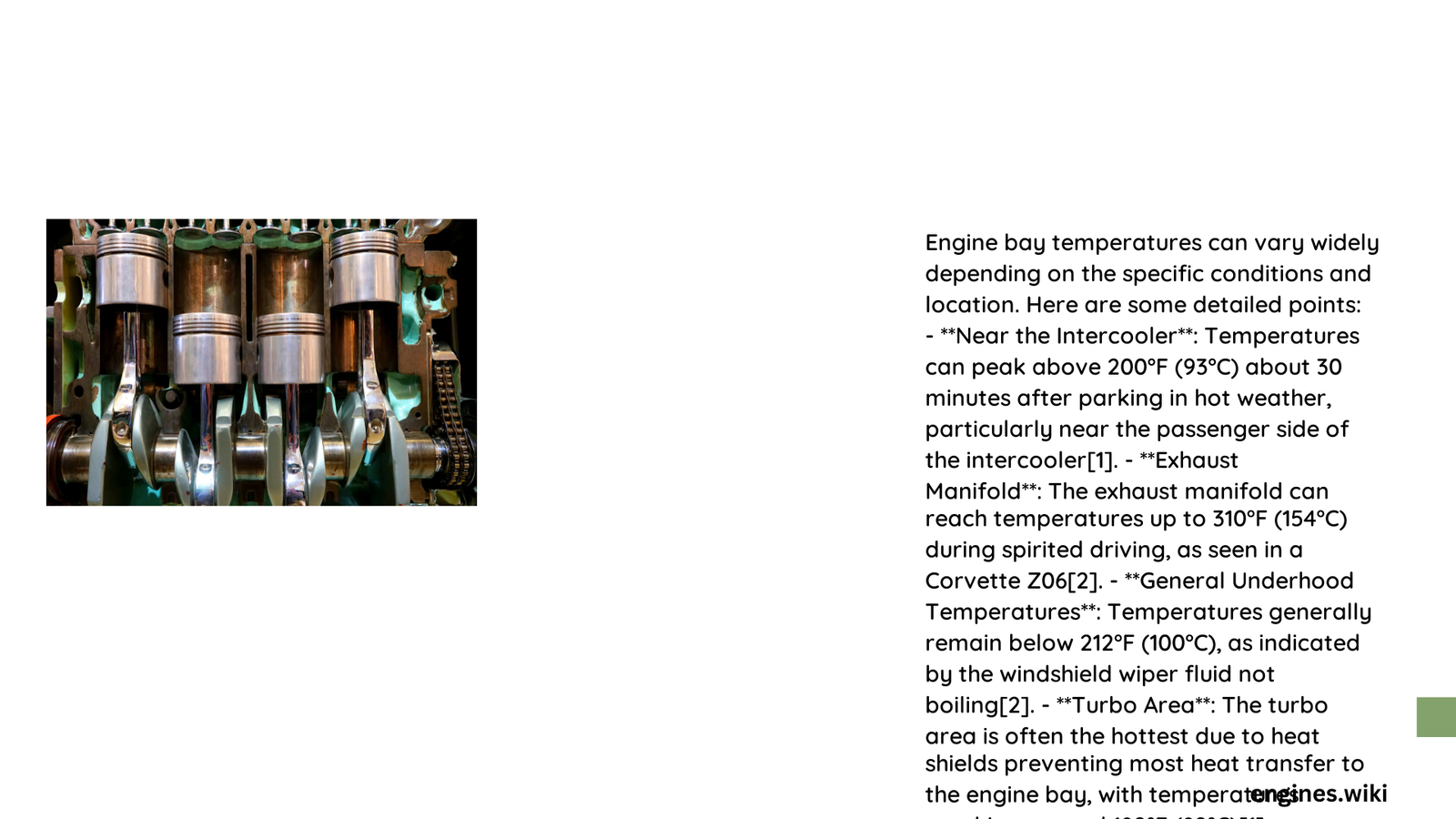Understanding Engine Bay Temperatures: A Comprehensive Analysis
Quick Overview of Engine Bay Heat Dynamics
Vehicle engine bays experience complex thermal environments where temperatures can dramatically fluctuate based on multiple factors. Typical engine bay temperatures range from 150°F to 240°F during normal and extreme driving conditions, with localized areas near exhaust components potentially reaching much higher temperatures. Understanding these temperature variations is crucial for vehicle performance, maintenance, and component longevity.
What Determines Engine Bay Temperature?
Factors Influencing Underhood Heat
| Factor | Temperature Impact | Range |
|---|---|---|
| Engine Type | Direct Heat Generation | +20-50°F |
| Ambient Temperature | External Environment | +10-40°F |
| Driving Conditions | Load and Speed | +10-30°F |
| Component Proximity | Localized Heat Zones | Up to 200°F Variation |
How Hot Can Different Engine Components Get?
Temperature Ranges for Key Components
- Intake Manifold
- Normal Range: 150-180°F
-
Peak Temperature: Up to 220°F
-
Exhaust Manifold
- Normal Range: 400-600°F
-
Peak Temperature: Can exceed 1000°F
-
Turbocharger Area
- Normal Range: 200-240°F
- Peak Temperature: Up to 300°F
Strategies for Managing Engine Bay Heat
Cooling Techniques and Considerations
- Improved Ventilation
- Add strategic hood vents
- Enhance airflow design
-
Potential temperature reduction: 10-20°F
-
Heat Shield Installation
- Use ceramic-based materials
- Cover high-heat components
-
Potential temperature reduction: 50-100°F
-
Advanced Cooling Systems
- High-capacity radiators
- Efficient electric fans
- Potential temperature reduction: 20-30°F
Real-World Temperature Scenarios
Driving Condition Impact
- City Driving
- Higher idle and stop-start temperatures
-
Average increase: 10-20°F above highway driving
-
Highway Driving
- Better convective cooling
-
More consistent temperature management
-
Performance/Towing
- Increased engine load
- Temperature spike: 20-40°F above normal
Potential Risks of High Engine Bay Temperatures
Component Stress and Performance Implications
- Rubber Components
- Accelerated degradation above 240°F
-
Potential seal and hose failure
-
Electronic Systems
- Performance reduction above 220°F
-
Increased risk of sensor malfunction
-
Fluid Breakdown
- Potential oil and transmission fluid degradation
- Reduced lubrication efficiency
Monitoring and Prevention
Recommended Practices
- Regular thermal inspections
- Maintain cooling system efficiency
- Use high-temperature resistant components
- Consider aftermarket heat management solutions
Conclusion
Understanding engine bay temperatures helps vehicle owners and enthusiasts optimize performance, prevent premature component wear, and ensure reliable operation across diverse driving conditions.

